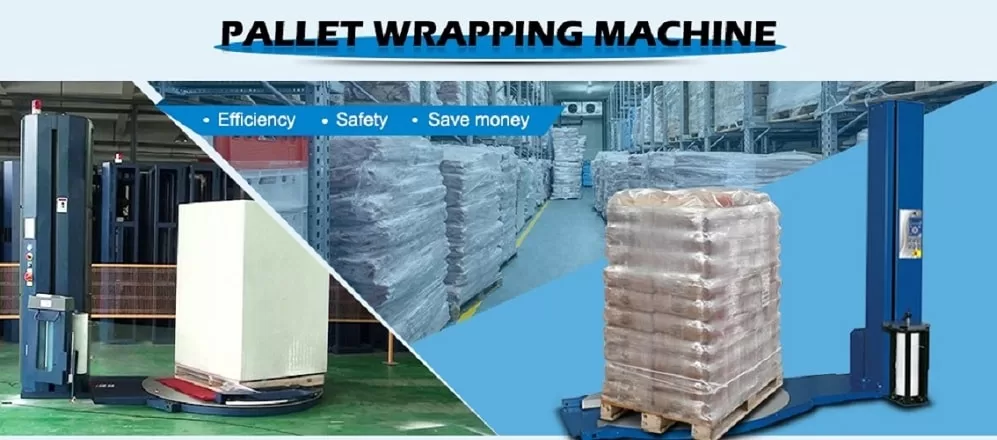Understanding Pallet Wrapping Machines for Enhanced Packaging Operations
Pallet wrapping machines, also known as stretch wrappers, are essential equipment in modern manufacturing, warehousing, and logistics operations. They automate the process of applying stretch film around palletized goods, creating a secure, stable unit load ready for storage or transportation. This guide explores the functionality, benefits, types, and key considerations when selecting a pallet wrapping machine.
How Pallet Wrapping Machines Work
The fundamental principle involves rotating the pallet load relative to a film roll dispenser (film carriage). As the load rotates (on a turntable) or the film carriage moves around a stationary load (rotary arm), stretch film is dispensed and applied under tension. Most modern machines incorporate a pre-stretch system within the film carriage, stretching the film before application. This optimizes film usage, increases load holding force, and reduces packaging costs. The film carriage typically moves vertically along a mast to ensure complete coverage from the top to the bottom of the pallet load.
Types of Pallet Wrapping Machines
While manual wrapping is an option for very low volumes, automated machines offer significant advantages in consistency, speed, and safety. The primary types include:
- Semi-Automatic Pallet Wrappers: These machines require an operator to place the pallet load onto the machine (usually a turntable), attach the film tail to the load, initiate the wrap cycle, and cut the film upon completion. They are a cost-effective solution for operations wrapping a moderate number of pallets per day. Common types include:
- Turntable Models: The load rotates on a platform.
- Rotary Arm Models: The load remains stationary while a wrapping arm revolves around it, suitable for very heavy, unstable, or light loads.
- Fully Automatic Pallet Wrappers: Designed for higher throughput operations, these machines integrate seamlessly into automated conveyor lines. They automatically position the pallet, attach the film, perform the wrap cycle according to pre-programmed parameters, cut and seal the film, and discharge the wrapped pallet without operator intervention.
Key Benefits of Utilizing Pallet Wrapping Machines
Investing in a pallet wrapping machine offers substantial operational advantages:
- Enhanced Load Stability and Security: Properly applied stretch film unitizes the load, preventing shifting, toppling, and product damage during handling and transit. This is crucial for maintaining product integrity.
- Improved Product Protection: Stretch film provides a barrier against environmental factors like dust, dirt, and moisture. Opaque or colored films can also offer UV protection and deter pilferage by concealing the pallet's contents.
- Increased Operational Efficiency: Automated wrapping is significantly faster and more consistent than manual methods, boosting throughput and reducing bottlenecks in the packaging line.
- Reduced Labor Costs and Improved Safety: Automating the wrapping process frees up personnel for other tasks and significantly reduces the risk of repetitive strain injuries associated with manual wrapping.
- Optimized Film Consumption: Pallet stretch covering machines with pre-stretch capabilities can significantly reduce the amount of film required per pallet compared to manual wrapping, leading to direct cost savings and reduced environmental impact. Pre-stretch ratios of 200-300% are common, effectively tripling or quadrupling the film's yield.
Essential Considerations When Selecting a Pallet Wrapper
Choosing the right machine requires careful evaluation of your specific needs:
- Load Characteristics: Consider the typical size (L x W x H), weight, and stability of your pallet loads. Very heavy, light, or unstable loads might necessitate a rotary arm machine instead of a turntable.
- Throughput Requirements: Accurately determine the number of pallets you need to wrap per hour or per shift. This is the primary factor distinguishing the need for semi-automatic versus fully automatic systems.
- Level of Automation: Assess your current and future automation goals. Fully automatic systems require integration with conveyors and potentially PLCs.
- Film Delivery System: Pay close attention to the pre-stretch capabilities. Higher pre-stretch percentages generally offer better film economy and load holding force, assuming compatible film is used.
- Operating Environment: Consider available floor space, ceiling height, and environmental conditions (e.g., cold storage, dusty environments) which might require specialized machine features.
- Budget and ROI: Evaluate the initial investment against the projected long-term savings from reduced labor, decreased film usage, and minimized product damage.
- Manufacturer Reputation and Support: Consider the manufacturer's experience, warranty, availability of spare parts, and technical support services.
The Importance of Stretch Film Quality
The performance of any pallet wrapping machine is also dependent on the quality of the stretch film used. Factors like film gauge (thickness), material (cast or blown), puncture resistance, and clarity should be matched to the application and the machine's capabilities for optimal results.
Maintaining Your Pallet Wrapping Equipment
Regular preventative maintenance is key to ensuring the longevity and consistent performance of your pallet wrapper. This includes:
- Regular cleaning to remove dust and debris.
- Inspecting rollers, belts, and chains for wear.
- Ensuring proper lubrication of moving parts as per manufacturer guidelines.
- Verifying safety features are operational.
- Checking film carriage components and pre-stretch rollers.

pallet stretch wrap 4 Conclusion
Pallet wrapping machines are indispensable tools for improving packaging efficiency, ensuring load security, protecting products, and enhancing worker safety. By carefully considering your operational requirements, load characteristics, and throughput needs, you can select a machine—whether semi-automatic or fully automatic—that provides significant value and a strong return on investment for your manufacturing or distribution facility. Proper selection, coupled with quality stretch film and regular maintenance, will contribute to smoother, more cost-effective logistics.